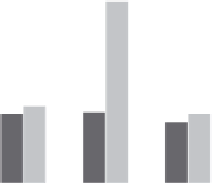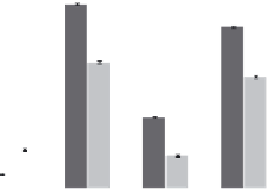Environmental Engineering Reference
In-Depth Information
5
10
(a)
(b)
4
8
3
6
2
4
1
2
0
0
PU
PET
control
GFRP
CFRP
PU
PET
control
GFRP
CFRP
after one year
after one year
2.5
(c)
2
1.5
1
0.5
0
PU
PET
control
GFRP
CFRP
after one year
Figure 2.13
FTIR of control and various plastics after one year of immersion in a
marine environment (a) keto carbonyl; (b) ester carbonyl; and (c) vinyl bond index
2.5 Anti-fouling Technologies
The severity of biofouling not only depends on the substratum characteristics but also
on the environmental conditions including temperature, salinity, light, geography and
depth. Controlling these parameters is impossible. There are three main approaches
to dealing with biofouling and they are:
(i) Detachment of biofoulers by mechanical means,
(ii) Killing of fouling organisms by using chemicals, biocides, or antibiotics, and
(iii) Development of low or non-adhesive surfaces [9].
Anti-fouling methods can generally be divided into three categories: chemical, physical,
and biological [62] and each of them have their own advantages and disadvantages.




























